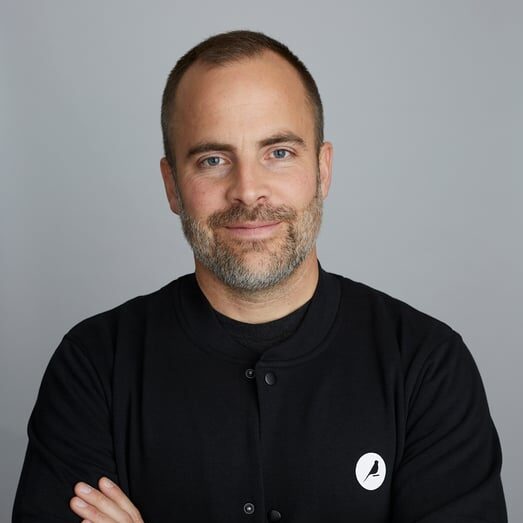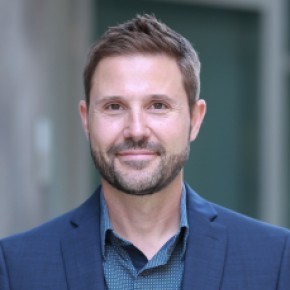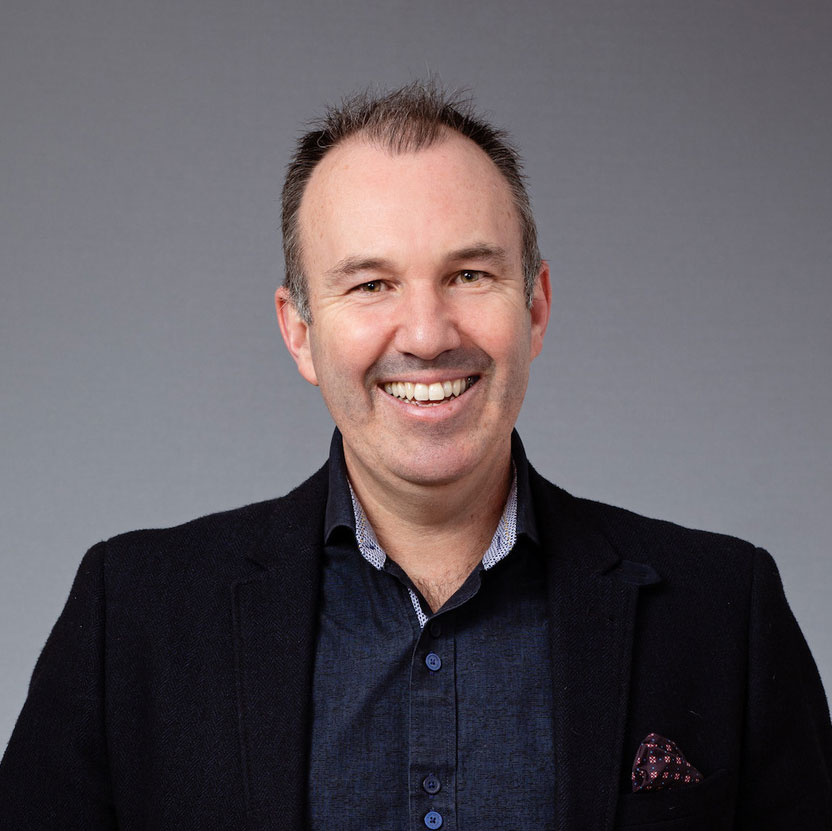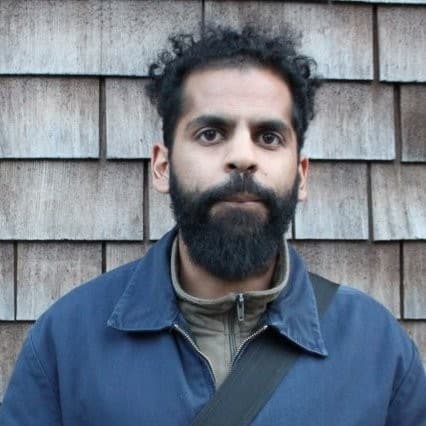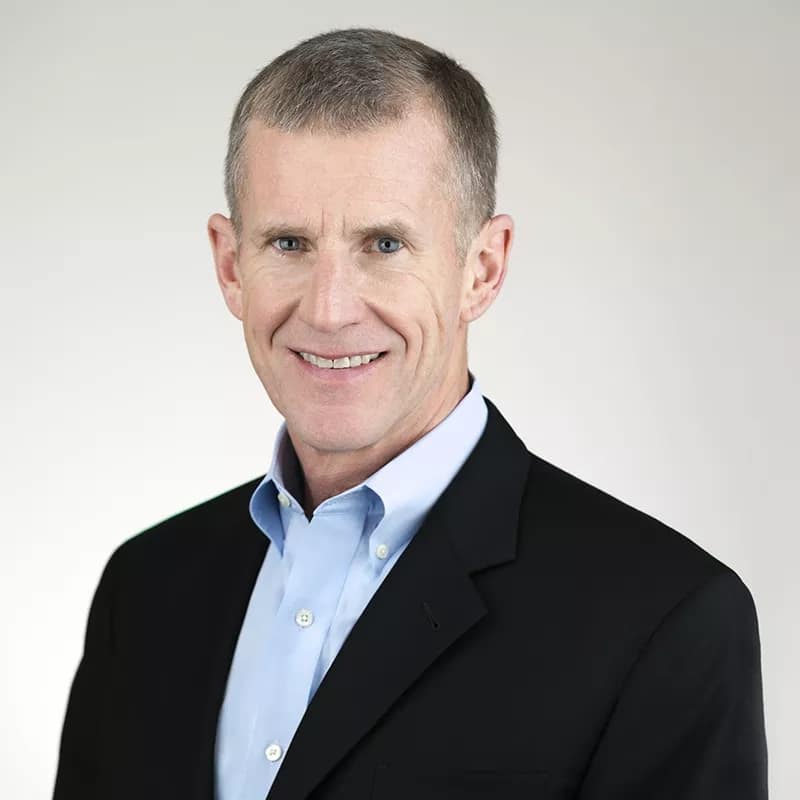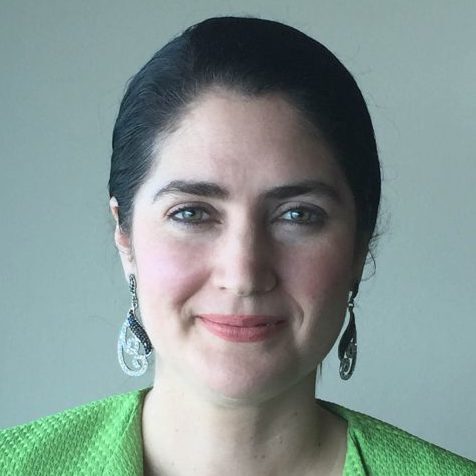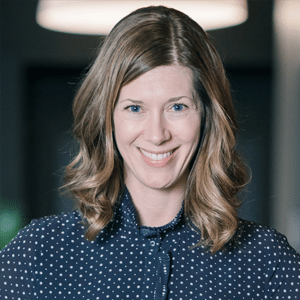Meshy Data Orgs: Data Teams in a Product-Thinking World
with Sanjeevan Bala, Group Chief Data and AI Officer at ITV

Sanjeevan Bala
Group Chief Data and AI Officer at ITV
Sanjeevan Bala is Group Chief Data and AI Officer at ITV and DataIQ’s most influential person in data. He is responsible for driving the digital data and AI transformation of the UK’s largest commercial broadcaster and media company.

Satyen Sangani
Co-founder & CEO of Alation
As the Co-founder and CEO of Alation, Satyen lives his passion of empowering a curious and rational world by fundamentally improving the way data consumers, creators, and stewards find, understand, and trust data. Industry insiders call him a visionary entrepreneur. Those who meet him call him warm and down-to-earth. His kids call him “Dad.”
Producer 1: (00:01)
Hello and welcome to Data Radicals. On today's episode, Satyen sits down with Sanjeevan Bala, Group Chief Data and AI Officer at ITV, an Alation customer. He's responsible for driving the digital data and AI transformation and leading an offensive growth strategy that enhances how they produce, promote, distribute, and monetize content. Sanjeevan is an international thought leader and has won numerous awards for his work. In this episode, Satyen and Sanjeevan discuss the idea of a data product manager, the importance of business literacy and the power of experimentation.
Producer 2: (00:36)
Data mature organizations can effectively find and leverage high volumes of data. They're also more likely to acquire and retain customers, while also outperforming peers. For a framework for benchmarking and advancing your data management capabilities, download this white paper. It's called The Path to Data Excellence: The Alation Data Maturity Model at alation.com/dmm. That's A-L-A-T-I-O-N.com/dmm.
Satyen Sangani: (01:09)
Today on Data Radicals we have Sanjeevan Bala, Group Chief Data and AI Officer at ITV. Sanjeevan is responsible for transforming ITV so they could fully leverage the value of data, AI and Web3 capabilities. Sanjeevan has combined his experience in large corporations with building and scaling several Silicon Valley startups. He's also been recognized as the most influential person in Data by DataIQ. Sanjeevan, welcome to Data Radicals.
Sanjeevan Bala: (01:36)
Thanks for having me, Satyen.
Satyen Sangani: (01:37)
So as the number one most influential person in data, many people would wanna learn from your career success, tell us about you, your career journey, how you got to where you are and what you think has made you so successful.
Sanjeevan Bala: (01:50)
Yeah, absolutely. I think I took quite a meandering route to data, if I can be honest, Satyen. So I first started out in sort of consultancy or a consulting firm, so doing a lot of work, moving across lots of sectors, developing kind of client management and relationship management skills, but really honing kind of the artist storytelling, right? Because you have to be quite credible with a client as you move from one sector to the next and you're focusing on sort of delivery and output management and all of those things. And I think what you learn when you're doing that in management consultancy is you become really adept at sort of absorbing vast amounts of information, synthesizing it very quickly, and becoming quite credible when you're engaging with clients. I moved out of that, then moved into sort of scale ups and startups, and what was fascinating there is, it's one thing to sort of know a lot of the theory and sort of develop strategies with the clients, it's quite a different thing when you're building businesses, right?
Sanjeevan Bala: (02:40)
And you are scaling hyperscale businesses. And it gave me a chance to kind of apply and learn a lot of operational experiences of how to sort of scale these businesses. So how might you deliver like a three year plan in three months, right? And that creates a whole different set of challenges and a very different way of thinking. But you've also developed this knack of sort of just harnessing teams around this sort of delusional sort of optimism, if you will, that can be absolutely galvanizing for how you think about teams and mobilizing teams. Moving on from there, I then went into sort of client side roles really. So did a lot of work with Dunnhumby in the very early years. Went sort of Cascade Club card, was sort of in its formative years and then worked in a lot of other sort of client based organizations. So multi-sided marketplace like eBay and Skype for example. And then lastly, I've complimented all of that with sort of non-exec work. And that's been a fascinating kind of journey because you get to sort of amplify your experience and expertise far more holistically and strategically in an organization that you're sitting on in terms of board roles and board expertise.
Aligning teams with strategic purpose for impactful business outcomes
Satyen Sangani: (03:38)
So talk to us a little bit about the three years and three months snippet, because I think that's something that many new executives struggle with. And you mentioned you sort of did that with rigor and you also did that with the teams that you'd be able to quickly and easily motivate. Tell us a little bit about that. Like how do you do that? I mean, that seems like a really hard thing to do, frankly, over three years, let alone in three months, and then figuring out the future is also super hard. What is your approach?
Sanjeevan Bala: (04:02)
Yeah. I think a lot of it comes down to, certainly what I've observed, Satyen, is, is often there's misalignment in teams, in organizations. And that I think creates a level of discomfort and confusion around sort of why you are here, what you're here to achieve, what's your North star. So I think a lot of, certainly in my time and certainly the time here, we spend a lot of time at the start really being absolutely crystal clear why we are here, what we are trying to achieve, we spend a lot of time linking it specifically to business outcomes, and that was a key thing that these two things had to work hand in hand. You couldn't have sort of these strategies in isolation that were sort of, some would describe very cost generative. And I think once you set that sort of higher purpose of why the team is here in the department, what you're trying to achieve, I think it's something everyone can get behind.
Sanjeevan Bala: (04:45)
And then it creates a whole set of different conversations around, well, what's that mean for the culture we're gonna create? How might we think about diversity in terms of recruitment and neurodiverse candidates? And what might that bring to the department, how might we think about, you know, storytelling and not just data literacy, but also business literacy. So it creates an entire playbook, if you will, Satyen, around how you then execute the rest of your strategy. But it has to start with that remit why you're here, what's your purpose for being within the organization and how do you link that through to the strategic direction the organization is trying to achieve and link the two things together?
How to define your organizational identity
Satyen Sangani: (05:16)
I think that's generally true, right? When you're either in a struggle or you're trying to make change or you are trying to chart your course for the future, a lot of people try to say, oh, well, where is the market going and what is it that the outside world has for us? And what are the big trends? And all those things certainly matter, but I also find that defining the identity of a group often is the fundamental thing that you have to pair back to before you can actually move forward. What do you do to do that? What are your techniques? How do you run your meetings? Who do you involve? How do you figure out who to involve in order to do that work and how do you do that as the non chief executive? 'Cause obviously a lot of the time that work is coming very much top down.
Sanjeevan Bala: (05:54)
Yeah. I think we spend a lot of time as a leadership team really being clear on the, I guess the business outcome we're trying to achieve. And then once you're clear on what you're trying to achieve, I think you then have to really enable your teams and these cross-functional teams to figure out the how. And if you don't create that sort of environment where they can figure some of this out, trial a few things, learn and sort of self correct and self moderate, it doesn't create a, I think a sustainable sustaining function, if you will. Because obviously the easy thing is to be very directive and very prescriptive around what you're trying to achieve. So you get there quicker, but it can have a huge detrimental impact on the team, right? Because I think the sort of reason for being, their self identity can take quite a bruising. So we spend a lot of time in terms of a lot of our meetings, we talk a lot about what are we trying to achieve? What is the outcome we want? And one of the common challenges I think you see with data programs is they're not always linked to a business outcome.
Sanjeevan Bala: (06:49)
And we talk a lot about the last mile to ensure that everything in the business is set up, everything in the last mile is there so the business can actually activate and realize the value that we are mapping and we're working towards. And that was another key part of this because I think you can often see here if teams that are building the most predictive kind of churn model, but actually marketing don't have all the tools to activate that all the way through CRM solutions and off platform targeting, right? So you're solving half the problem, but not end to end to go sort of and ultimately achieve that value outcome. And I think that helped a lot in terms of how we built our teams and how we described the outcomes we're trying to achieve and let the teams figure out the how.
The art of storytelling and data-driven leadership
Satyen Sangani: (07:26)
Makes complete sense. And as you think about then your early career journey, I mean, getting back a little bit to sort of the place you are today and this recognition which I sort of said with a little bit of inflection, but I mean, it's obviously the case that people really look up to you and people really are impacted by you and your presence and how you lead. What kind of was your most formative career experience or actually maybe even non-career experience, what are some of your two or three most informative experiences in helping you get to where you are today and helping you figure out how to be in the position that you are?
Sanjeevan Bala: (07:55)
Absolutely. I think one of my early experiences during my consulting years actually is there was a long running program that was sort of really struggling. The client was particularly unhappy, had failed to deliver on numerous occasions. The team, delivery team were quite demotivated. And myself and another partner were put in to sort of look, sort of identify what was wrong and how might we sort of turn this around and get this onto improvement. And I think at the time I remember learning from this particular partner 'cause he was very, his hypothesis was you always kind of work with the team you've got, you don't get to sort of pick your team in these instances often. And so what he did watch is he spent an awful lot of time mobilizing, creating clarity, setting a really compelling vision and getting the teams kind of galvanized around these sort of the art of storytelling really around this is the potential we could deliver to the client.
Sanjeevan Bala: (08:44)
And it was through that sort of work around almost the culture within the team, the delivery team, that like you saw this huge shift, this self-belief that actually they could deliver and they were going to be able to deliver and they could work with the client to kind of excel in delivery. And I think just witnessing that, I think that turnaround where you have the same exact delivery team through the work of a leader, a very strong partner, for example, where they made the change, shifting a team that was underperforming, lots of complaints from the client, to an absolutely outperforming team, right? That was absolutely excelling in terms of client satisfaction. And it wasn't by changing the individuals, it was all around connecting to a deeper meaning. It was all around sort of linking it through to what the client is trying to achieve.
Sanjeevan Bala: (09:24)
It was breaking down barriers around what the client is wanting and how we were translating that or mistranslating that. And it always comes down to sort of human dynamics and behavioral analysis, right? In terms of how all these different disparate teams and client relationships are operating. How do you unlock some of those things? So that was one very, very early on in my career. Much later on, I think a lot of the work in my time at Dunnhumby where we were really pioneering. So I was at Dunnhumby sort of just post 2001 roughly, so quite early on where data really wasn't a boardroom agenda. And at the time Dunnhumby was really championing the use of data in Tesco, for the retailer, and pretty much wrote the playbook, how do you as a retailer, food retailer, create value from data? And that was everything from your double-sided business model, the supply chain value. And today retail media as we know it was definitely formed in some of that early thinking. And that was an incredible environment because you really are sort of pioneering, you're doing something that's never been done before. I think that set that sort of trajectory of how do you keep looking forward and onward and how do you enable these things and bring these kind of capabilities into organizations to drive value?
Linking data program outcomes to business objectives
Satyen Sangani: (10:31)
Yeah, it's funny, you speak in a way about sort of really coming from the outside in and being able to evolve and make changes and you do so in a way that really resembles in my mind, a coach, one CEO that I once mentioned is that the first thing that I do when I look at a resume, he said to me is, I look at the first job that the person has had and that tells me a lot about sort of what they will do to approach a problem. And I'm like, I'm not quite sure how to believe that, but it does feel like that that experience of sort of really consulting web, and I'm not sure whether that was your very first job, but it does inform your approach. What's interesting is, so now you're, you've been at ITV for, at this point almost four years having joined since 2020, you're almost a dinosaur as far as most CDOs in their tenures are concerned. How have you done it? If you think about that particular experience, how has it changed during the time that you've been there and what have been sort of the waves and the shifts? And tell us a little bit about how you've evolved in that time.
Sanjeevan Bala: (11:24)
Absolutely, Satyen. So I think when I arrived, Satyen, I think it's fair to say that the sort of core building blocks were there, right? And so what I mean by that was, yes, we were collecting data. I think you'd be remiss any organization now not doing so, right? Cloud was an obvious choice that we were putting all of that data into cloud and we had people capability, right? So we had analysts, data engineers, data scientists. So we had the skillset, right? But I think what I observed when I first joined is there was no link through to what this unit was trying to achieve, what outcome the business was it delivering against, right? So it was probably what I would describe as a defensive strategy. One where it was receptive to requests, right? So it would take orders from the business and then fulfill those orders, right?
Sanjeevan Bala: (12:06)
So it was very much a pull from the business, if you will. So that was the sort of landscape that I started with. So there wasn't a, I felt there wasn't a connection to the outcome, the business, there wasn't a story you could really tell a city. So what we did is we got going, working on what we call value cases really. So that's working with business stakeholders. If you think about it, you typically have marketing to acquire customers in a more efficient way. Product, once you've acquired those customers, how do you keep them on the product longer, consuming more of the product? And then commercial, right? Are the three typical kind of value levers and that's all around, well, once you've got them in using the product effectively, how do we then monetize that particular audience? And we really kinda mapped those things with the business leaders, right? So classic questions was, if we were to be able to target and identify who's a likely lookalike viewer, what might you do with that in marketing, right? And then you'd have the conversation with marketing, you'd map that through to, well, how many more market active users could we then acquire if we did this? And all those things can translate to some metric around value, right? Be that and increasing your monthly active users and increasing your viewing hours and increasing your advertising yield, right?
Sanjeevan Bala: (13:08)
So you can translate a lot of that to those kind of value outcomes, which then means your business owner sort of is responsible for the sort of the realization of that value. But you can very elegantly then link what you're doing, what the team are sort of there to achieve with those outcomes. That was a massive connect and once we did that, we then got huge amount of board and Exco sponsorship. It was very clear about our remit and our purpose, why we're here, what we're trying to achieve, and then we got going when delivering it. So it was against those three key areas. In fact, the three KPIs we have in the business is what we call double, double, double. So double the monthly active users, double the number of viewing hours, double the commercial revenue and in a strategy directly matched and fitted against those three pillars because everything we did was to enable those three outcomes in a very value driven approach.
Sanjeevan Bala: (13:53)
And that I think really helped kind of galvanize the team. The other bit we got into, Satyen, which I think is quite a critical piece is operating model design and structure. So we're a very, very creatively driven organization. So the thought of sort of data and data scientists and things like that get quite tricky 'cause how does that work with a very creatively driven organization? So one of the things we did very early on is we made sure these teams were embedded in the business units, 'cause we didn't wanna build like an ivory tower, this center that was detached from the business because that's a very obvious thing to do because you can build these things very quickly. We ensured these things were fully embedded and that's because as with most organizations, they have microcultures. If you think about a very creative part of your organization in a very sales driven organization, those are really light and day chalk and cheese cultures.
Sanjeevan Bala: (14:39)
And so when you're embedding these teams, it's really important they go native and then they feel like part of the organization, a part of the fabric of those teams and then the ideas come from within. And that was another big unlock for us and I think that helped really sort of accelerate and galvanize the strategy and get us to where we are today where we've had great success of ITVX and the launch of ITVX, which is a direct to consumer streaming product. And a lot of that's been driven by data and how we're using data in a very value generated more of a offensive strategy I think.
Balancing metrics and creativity with strategic outcomes
Satyen Sangani: (15:04)
I wanna come back to that org model in just a second, but on your first point, you mentioned this notion of sort of being aligned with the business and in order to do that you were aligning around the key top of the house metrics and ultimately then end up organizing the work to further those measures. One of the things that I find that's quite difficult even in our business is that you have these significant top of the house metrics, but then any given project that you do is gonna have a very limited effect on that top of the house metric. And so then you're in this place where you're like, well, we're gonna do this small thing and this small thing is gonna move this big thing. But then, because that big thing is complicated and multifactorial, you have this thing where like the small thing may not affect the big thing as much as you might want.
Satyen Sangani: (15:44)
And then you get into these questions where like, well, are we even measuring the thing that we are trying to move? And so then you have to come up with sort of more granular metrics and that I find is a highly iterative process. And then often what you find, and you can tell I've thought about this a little bit, is that like you end up in this place where you actually don't have the measurement to... The business process isn't actually measurable enough. So you can do the thing but you don't actually end up measuring it. Tell us a little bit about that work because I feel like that's where data teams end up truly falling apart or at least just that's where the rubber meets the road. Like am I measuring and defining the business process in a way that I can actually prove impact? How do you do that?
Sanjeevan Bala: (16:21)
Yeah, that's a really good question, Satyen. I think we took quite a practical approach to this. Because I've seen a few models and I'm sure you've seen something similar, Satyen, where you can have sort of paralysis of measurement. Where you build like a cottage industry of benefits tracking and benefits measurement and you're trying to measure everything to the end sort of degree. So it was really a question with our finance team and our CFO around, okay, well, we've set our path on value, we don't own the value levers, so it's all embedded into kinda the marketing strategy, the commercial strategy, product strategy. But as we got going, we sort of calibrated with the organization around, okay, well, how rigorous do we want this measurement to be and how directly attributable do we want this to be? And where we basically concluded it was actually, it wasn't necessarily to measure to the nth degree.
Sanjeevan Bala: (17:02)
What we're looking to do is how do we shift some of the culture? How do we shift the organization to be much more data driven? We can combine artistic endeavor with some data kind of understanding. So what we would often do is we'd sort of run one or two experiments once we're delivering this value and we'd sort of measure, what did that single experiment deliver upon? And then we'd sort of have this abstraction that said, okay, look, that's what happened in this one instance. Do we all accept that if we scale that up, it's not a linear scaling, but there's gonna be a halo effect of that benefit, and do we accept that's proof positive that this is driving and shifting the needle? And that's the approach we took. But you're absolutely right. If you think about marketing, that can be quite complex to unpick the contribution.
Sanjeevan Bala: (17:40)
So was it sort of the strength of our amazing content that's dropping in ITVX or the targeting of platform on social media that drove a lot of those monthly active users? And there is absolutely a lot of that you struggle to untangle. But I think the real question becomes how much do you want forensic measurement and are organizations up to incur the cost to develop teams that are forensically scrutinizing that measurement? Or do we take a less touch approach? And there's a whole set of soft intangible benefits that come with this like organization agility, like learning cycles that are harder to quantify in terms of hard pounds and pens, but create a much better, more agile data-driven organization. I think some of that, some of the softer intangibles are also important to kind of factor in and load into your strategy.
Harnessing experimentation to drive organizational change
Satyen Sangani: (18:20)
So if I'm to summarize your approach, you set a north star with a large strategic goal and then the premise is let us come up with a set of hypotheses that we want to be able to then prove out through an experiment or two or three or four, and then the results of that experiment will guide whether or not we will take further investment along those lines in order to be able to move that particular initiative forward.
Sanjeevan Bala: (18:43)
Absolutely. And I think the notion of experimentation, Satyen, why it's so powerful, especially when you think about the last mile in the business units, is often what you underestimate is the level of organizational change, culture change, people change that you have to sort of implement in these programs, in pockets of the organization, right? With experimentation, what happens is you're running your change program, you get to pick up on some of these clues and you get to calibrate, well, how big a change is this for this particular part of our business? And therefore how much more do we need to invest in sort of upskilling, training, development, sort of showing the possible. There's other parts of the forest where, for example, let's say in digital marketing, you already have marketeers that are very digitally literate already and they're used to things like cost per acquisition, cost per click, all those kind of metrics, so they're very, very data driven already, right? So that's a very different approach there and I think it's important you run the experimentation because it allows you to recalibrate your approach and critically make it fit for the business in terms of the business units you're operating within. And I think that's the other piece. There isn't a one size fits all across an organization. I don't think that tends to work particularly well.
Optimizing for impact
Satyen Sangani: (19:41)
Did you, when you set up this sort of experimental or experiment-oriented approach, what I find is that experimentation requires a certain infrastructure of measurement that you have to be set up to at least measure something in order to be able to know what the action actually had some differential impact. And then there's the question of like, well, or do you change the experiment design in order to only experiment with something that can be measurable? How did you navigate that chicken-egg problem?
Sanjeevan Bala: (20:06)
Yeah. So I think we set out much more on a hypothesis driven, what are the things we're trying to test for and how do we sort of ensure that we can run the experiment in a way that is reasonably robust? I think you're absolutely right. As you're starting out, you often don't have all the tooling, all the instrumentation to sort of forensically kind of measure this out. But that itself is an important learning for traditional businesses, because what you tend to find is you'll get sort of top of funnel indicators, right? And you start to ask yourself, well, actually how much of that is flowing through all the way down to kind of our cost per click or cost per conversion kind of metric? And over time you start to kind of piece together in that chain the things that need to be put in place and therefore the benefits of putting these capabilities in place can be.
Sanjeevan Bala: (20:46)
So you take a much more iterative approach. So I have seen organizations that go down this sort of huge experimentation, infrastructure, architecture, and you're running thousands of these experiments. But what you often find, Satyen, is it's marginal gains, right? And the cost of running all this is disproportionate to the actual benefits they deliver. So I'd definitely advocate this iterative gradual approach, kind of wiring up to that infrastructure, that ecosystem, rather than setting it all up and then having that sort of near perfect kind of solution.
Satyen Sangani: (21:12)
Yeah. I mean, I think that is the biggest challenge that chief data officers effectively navigate, which is on one hand, you need the infrastructure in order to be able to do the work, but on the other hand, you need the funding to be able to build the infrastructure, but then nobody's going to fund you if you don't actually have an impact. And so how do you actually build the infrastructure while actually having impact? That feels like the place where many are not able to navigate it. But I want to come back to that org model question because you mentioned this idea of distributing or having certainly the data org live inside there. Do they directly report within the line of business or is it do they directly report it to you and then they're sort of seconded to the line?
Sanjeevan Bala: (21:46)
Directly reported to the business. So things like the budgets would move across, say they have to go native, was really the feeling, the hypothesis. They have to feel like they're part of marketing, not part of data.
Decentralizing for business readiness and impact
Satyen Sangani: (21:56)
Is that how you started day one?
Sanjeevan Bala: (21:58)
No. No, So initially we started incubating in the center to kind of build all the skills and capabilities. And then we started decentralizing as we built data as a product, capabilities. We engage with what do we need in the last mile to ensure that value could be fully realized. Then we kind of made sense because we have to do a readiness on both sides. Is the data unit ready to be pushed into the business? Is the business ready to take on this data unit? So I was looking at things like, do they understand how they might use and get value from this data unit? And then equally, does the data unit understand the business context within which the unit is going to operate within? So there's a lot of that readiness we had to do before we sort of ensure that they went, moved into the unit, into the business areas, and then could become successful, right? Otherwise you can really risk sending teams in, there's a translation issue, that the business struggles to kind of get value from them. It's sort of they're all talking different languages. It can really sort of misfire. So I think you need to have that in a very phased planned approach.
Satyen Sangani: (22:48)
Are you still doing that? Are you still incubating data teams that you would move across? Or is that, are you now fully past that because your business units have absorbed and are all at the level of maturity to take those teams?
Sanjeevan Bala: (22:57)
In the areas I talked about earlier, so across product, marketing, and commercial, they're all now embedded. This is currently the model we've got. What we're now looking at is, where's the next set of value cases, right? So our business, we have a streaming, a TV business. We also have a content production business, right? That creates content and exports that globally and sells that globally, right? That's a different set of questions there, right? And a different set of opportunities around how data could play a role there. So now starting to shift more horizontally across the organization, but taking a similar approach. Okay, what value and what outcome are we going to affect? How material is that in terms of alignment to what the business is trying to achieve? So we're taking a very similar approach to it. We're starting to expand further.
The impact of decentralizing data capabilities
Satyen Sangani: (23:36)
What lives with you now outside of the core data teams? Is data engineering living with you? Is data governance? I mean, what are the core data capabilities that live centrally versus the ones that live remotely?
Sanjeevan Bala: (23:47)
Because of the sort of microcultures, we've decentralized things like data engineering, governance, all of those things. What the center attempts to then do is figure out what are the common ways of working we need to establish? And how do you start to sort of join the dots and become a bit more of the glue? So I'll give you some examples, Satyen, right? Once you fully decentralize, you can build a data product in marketing that's phenomenally useful to marketing, but often marketing and sales are solving the same problem, but looking through the other side of the telescope, if you will. So what you often find is something you build for marketing, just a quick conversation with the commercial team, two to three sort of variations of that data product would create a lot of value for commercial. So what we try to do is as we're seeding ideas, we create these working groups that allow us to spread the sort of, here's what we're doing next, this is where we're going with this, this is how it's going to drive value. And we look at other opportunities to kind of extend a particular data product because it could then have multi-use across the business. And that's how we started to embed those things.
Sanjeevan Bala: (24:41)
It's not easy, Satyen, I have to be honest with you, because obviously once the teams go native, there's that classic thing around, well, I belong in marketing, why am I getting this edict here? So that requires another level of, how do you influence, how do you ascribe the benefit of common standards, common ways of development? So it has to be all count into the benefits language, how does it help that particular domain, but also how does it help the unit and the business more holistically? So there's a bit of a balancing out there, but I think it creates the right tensions in the business and healthy tensions and debates and discussions in the business.
Data literacy versus business literacy
Satyen Sangani: (25:10)
Yeah. I mean, any org model, I mean, in any context, whether it's functional versus product or line of business oriented, they're always going to have some trade-offs between them. And in your case, and I think in most data leaders' cases, there's this question of centralization to enforce common standards and common investment versus embedding with the business, which may fail sort of, if you will, in terms of its efficiency, but it might succeed in terms of its value orientation. You've clearly oriented towards the second, which I think in this era of a little bit more austerity than maybe we had two years ago, it seems like the right tilt. Now, when I first met you, it was actually at an event called Revelation. You were on a panel with the other, number two and number three leaders from DataIQ's top influential leaderboard. And all of you happen to be Alation customers. So I know this is not a podcast, a plug, but I take some pride in that. And the thing that you mentioned on the stage was this idea on this panel discussion of business literacy. And I vividly remember that moment. Because when you did, I looked at Chiti Volpi, who leads our EMEA business and has been with the company for like almost seven or eight years and we just said, "Oh wow, that's a really interesting concept." So people talk so much about data literacy. What is business literacy? And tell us about like what that means to you as a data leader and how you came up with that concept.
Sanjeevan Bala: (26:27)
Yeah. Absolutely. So I think the industry generally, to your point, Satyen, focuses a lot around sort of data literacy and I think there's a few challenges with that. One, sort of no one wants to be illiterate. So when we embarked on even that sort of side of things, we looked at sort of more, we use language around data upskilling. So no matter where you start from, there's a benefit to be had and you can sort of skill up. I think with the idea that we were wanting teams to go native, what was really key and I see the market shifting more now, is that business context is absolutely critical. So if you go back a few years, Satyen, I think the whole industry was focused on hiring the unicorns, the PhD mathematician, data scientist. And it was all around sort of those technical sort of skill sets.
Sanjeevan Bala: (27:05)
But actually, all too often those models that you develop don't have the business context, can't be deployed successfully in the business. So where I think the market's shifting now is business context and that tacit knowledge is almost trumping the technical expertise. So this idea of sort of business upskilling was all around, well, how do you ensure that the teams are going into marketing? They have a nuanced understanding of kind of what marketing are trying to achieve, what are the KPIs they're working towards. What's some of the language? 'Cause everyone, every department, division has slightly different language. What sort of language they're using. How does this fit in with worms and what are they trying to achieve? And we just spend a lot of time kind of training the teams and talking the teams through that sort of understanding of around the domain they were gonna join.
Sanjeevan Bala: (27:44)
So whether that be product, marketing or commercial. So that was one part of it. The second was they had to get fully integrated. So they had to then start attending and joining and being part of the fabric of marketing. So when marketing were having a challenging time in terms of some of the marketing activity, it was really important this team felt it. And so they weren't sort of abstracted as a central data unit and marketing were kind of putting in these requests to support them. They had to be hand in hand. And they had to be sort of joined at the hip really. And that was another part of this that was really critical. So I think once you've got that unlock, then the ideas come from within. And what you tend to find, Satyen, is the quality of the ideas are far more likely to be deployed and productionized because it comes from a place of domain understanding and business understanding of what will really work and what will be harder to kind of get off the ground. And that knowledge is absolutely critical I think for exhilarating your progress and data strategy.
Integrating data expertise directly into business units to enhance agility and collaboration
Satyen Sangani: (28:33)
Yeah, it's really interesting. I mean, one of the other panelists on the stage was a gentleman by the name of Steve Pimblett. Steve was CDO at the very group, was on the podcast, I don't know, maybe about six months to a year ago. And Steve talked a lot about this idea of having sort of a customer success manager or an account manager from the data team inside the line of business in order to be able to develop this kind of empathy and agility. But I think this sounds like this is really the double click for you in this notion of going native, in the same way that a finance business partner might attend a line of business's meeting, you've got sort of a data business partner that is literally in the meeting and they are sitting there with the functional managers trying to understand what they need to do in order to be able to further the business initiatives of that manager.
Sanjeevan Bala: (29:18)
I think that's absolutely right and I think because we went down the data as a product notion, Satyen, that leadership role was a data product manager. So incorporated product thinking in the way in which sort of data is developed, designed and used. I think what's beautiful about product thinking is it's very well adapted and equipped for understanding competing objectives and competing needs, creating methods by which you are trying to either align or prioritize those needs. And I think a lot of that thinking and method and approach is what we adopted because we went down sort of data as a product kind of method and thinking. And that allowed for those, some of those tensions to exist and be debated but critically allows you to kind of prioritize around the right things because you're constantly looking at how do you make sure you can productionize and scale and realize the full value and what does it take to do that?
Sanjeevan Bala: (30:03)
And that goes way beyond what you're doing in data. That gets into organizational change, that gets into sort of last mile technologies that you may not have thought about, that has no sort of remit of a data unit. But it requires you to really think about it and go end to end. That was one of the key driving principles. This unit has to be able to go end to end from an idea and ask the possible all the way through to production and realization. And that I think then ensures that things are much more joined up and when you commission work, it's much more practical and pragmatic, that it's got a high likelihood of success because it's within that business context. Some of those things are real critical ingredients to this.
Bridging business acumen and data expertise
Satyen Sangani: (30:37)
So this data product manager, is that one of multiple roles that gets embedded in the business unit?
Sanjeevan Bala: (30:43)
Absolutely right. Yeah. So each domain has one of those. Absolutely right. Yep.
Satyen Sangani: (30:46)
And what is their skillset? Where do they come from? What do they look like?
Sanjeevan Bala: (30:51)
It really varies, Satyen. So I think you find real strength when you recruit from within the business domain. Because there's a deep understanding of a particular business area. So what that then means is they're already accepted by the business unit. And there's already a pull, there's already an understanding. You get other shapes of these where you get individuals that have come from a product development background. So they understand product management methodology, they understand how to think about product and features and feature design and feature releases. And so they intuitively sort of ask some of those probing questions and they can be fantastic because they're really challenging what's it we're gonna be doing, why are we doing that? They can be really good with stakeholders as well as the data team. Because they kind of come from that kind of thinking. They structure their thoughts in that particular way.
Sanjeevan Bala: (31:35)
The other area that I think has taken us a bit longer to get upskill is where you can bring in sort of people from a consulting background for example, that can be powerful for engaging. But sometimes what you can find is when you're then doing the delivery, you sometimes need to partner them up with like an agile delivery manager, for example, because you need to translate that very succinctly, very crisply using product thinking. And that's where sometimes you might have to compliment some of these roles with an additive role to help bring some of those things and that rigor in.
Localizing the prioritization debate
Satyen Sangani: (32:02)
Yeah, I find that product management is ultimately an exercise of strategy. And strategy is ultimately an exercise of choice. And so often what I say to our product managers and to many of our product leaders, I'm like, "Look, your job is to make the right decision and then go convince everybody that you've made the right decision." And making the right decision isn't about just like immediate impact. It's also about long-term impact. If you've been trained in product thinking, there's obviously some shot that you're good at that. Although, in many cases I've met many product managers who are like not great product managers because they don't quite get that dichotomy, either they don't pick it right or they don't sell it right. But then, getting people in the line of business, that's a talent shift. How do you train those people to think that way? 'Cause that's, nobody wants to make choices. Everybody wants just to do everything. So how do you get people to think, oh, we gotta pick?
Sanjeevan Bala: (32:51)
Yeah. I think what starts to help that is as you're embedding these teams effectively, it's very subtle, Satyen, but effectively what you are doing is you're giving the business a fixed capacity model, right? Because you're sort of saying, right, here's your squad, they're cross-functional, they can go end to end, but here's effectively your squad and this squad has a certain throughput it can deliver against. As you do that, what then immediately starts to happen is how does this unit and therefore this squad start to prioritize? 'Cause effectively what you're saying is it's a question prioritization, right? That then localizes that debate, 'cause I think all too often I've seen it where the request for prioritization comes into the data unit and the data unit on the backend has to start to prioritize these things. And it can be really challenging when you're going against multiple stakeholders in product versus commercial, let's say. What this does, I think it subtly forced that sort of prioritization, that sort of how are we gonna sort of use this fixed capacity model, it localizes that within the business unit and that then creates its own natural prioritization mechanism, right? So that goes everything from what's the most important thing we need to do for medium or long-term growth versus the most urgent thing we need to do in terms of fixing something here?
Sanjeevan Bala: (33:56)
And now because we're hitting a quarter, we need to kinda get something across the line. Now historically, those tensions were thrown over the fence. When you localize, those tensions are embedded within the business units. And that I think creates the right sort of counterbalance, if you will, because there is no additional capacity you're gonna add to this and it forced the right kind of prioritization. Now, don't get me wrong, Satyen, it differs by team. So sales might use a different mechanism versus marketing versus product. But the fact that it's done by the business I think is golden versus it getting thrown back into the data unit to then kind of prioritize on the backend, which I think gets incredibly challenging.
Two-lane roadmap: short-term wins and long-term strategy
Satyen Sangani: (34:31)
So you're saying that by having the data teams embedded in the business units, they're faced with the... 'Cause the biggest issue then is infrastructure, right? You basically end up saying, oh well, I'll just deliver this in project and as part of this project, and these projects are all sort of snowflakes totally independent of each other. And you're not developing scalable capability. You are saying that by actually embedding these people in the business, the business is now faced with this long-term versus short-term problem, which is counterintuitive. It's not what I would expect. I would expect them to just optimize endlessly on business value vector. You're saying that that's actually happening because people are faced with the long-term implications of where their investments are going?
Sanjeevan Bala: (35:08)
Absolutely. Because I think you are localizing that debate to your point, Satyen. So where there's a near-term priority, there's an immediate trade off, right? Where on the roadmaps, so you almost have like a two-lane roadmap, right? You have some things that are very tactical here and now, some things that are a bit more strategic and a bit more long term. But as we are making those trade offs and we're pulling people off long term to work on some short term work, that further delays long-term work, that conversation gets highly localized, right? And therefore the scenario you're playing through the implications of some of these decisions are far more directly felt within the business units. So I think that creates the right kind of culture where you're bringing those two sort of tensions together within the business units and that then helps you sort of start to navigate this way. 'Cause ultimately it's a judgment call the business needs to make, right? Whether it is right in the near term to kind of focus on short term priorities, but critically when doing that, we're trading off. It could be technical debt, it could be sort of longer term kind of enablers that we might need in a future state.
Navigating AI in the real world requires pragmatism
Satyen Sangani: (36:01)
Interesting. So your title is Chief Data and AI officer and of course no podcast in 2024 is complete without the word and mention and discussion of AI. Let's talk about AI. What are you doing in AI? What does that mean? How much of your budget is dedicated to AI initiatives? How bullish are you about AI relative to the current world, which seems like it's all AI all the time?
Sanjeevan Bala: (36:23)
Yeah, so I think the way we approach it is we almost went back to basics if we're gonna be honest, Satyen? So what we did is we spent time around use cases and value cases around how is this gonna be deployed? So going back to my earlier example, how might we use it for activating marketing, product and commercial, right? So some of the examples here are, yes, we have deployed AI in terms of how we build segments and lookalike models, for example, in marketing. So for example, if we've got a particular show like Love Island and we understand who's a loyal user there, how might we use it to kind of find lookalikes and promote the show to young audiences off platform, on social media for example? And really interesting angle that we deployed is where we had an AI engine kind of running and watching the content, listening to the subtitles and then reading the subtitles as well, right?
Sanjeevan Bala: (37:06)
And what it would do then is it would identify positive moments in a particular show where let's say coffee was spoken about very, very positively and it would then allow us to inject a coffee ad in that first ad break because it was contextually related to the show. So these are some really practical examples, but that wasn't an idea that just got incubated, Satyen, right? It all came back down to what might be the strategy to increase advertising yield, right? In order to do that, you need a more effective advertising product. In order to do that, we need to better prove that a particular time of advertising product is creating a much better outcome for the adverts in terms of brand recall metrics or spontaneous brand metrics. And that's how we went through a lot of this. So I think our approach has very much being grounded in what are we gonna do with it and how are we gonna use it, right? Because effectively it's a tool and an augmentation of a capability, in itself it doesn't really exist, right? So I think that was the core strand of it. In terms of where we're at with it, especially with generative, I think we see it through two lenses actually, Satyen.
Sanjeevan Bala: (38:00)
We see it through how does this create opportunity for us, right? And effectively how might this create and change the way in which we think about content creation and distribution, right? Because it is effectively these source create content. So that's working with creative leaders today, educating them about what these tools do, how they work, giving them access to some of these tools so we can start up experiment and identify where is this really gonna generate value for us? And when we think about productivity, what the interesting debate we're having is, well, how do you take the productivity gain? Is it about more outcome or more output or better output? And better output is hugely subjective, right? So those are some of the debates we're getting to on that side of things. Other parts of the forest, we are bullish because I think what we're seeing is how then do you think about risks?
Sanjeevan Bala: (38:43)
So there's the opportunity side, but there's also the risk side, right? And given we're an IP content creator, we need to measure that enthusiasm with, well, how do we think about IP protection? How do we think about IP leakage when you are using some of these generative tools and who owns the IP? So some of those sort of gnarly issues around IP protection, IP kind of ownership get quite critical. So you can find yourself sort of over steering around the technology, but then under steering in terms of how much value you can capture from some of these things. So we're taking quite a pragmatic balanced view while we're constantly looking at opportunity but also risk. And that's how we're sort of navigating through that whole moment. But we are starting from business outcomes first versus I think the hype of the possibility and the sort of the tech cycle hype that we're in at the moment.
AI experimentation: high-impact AI outcomes over volume
Satyen Sangani: (39:24)
Super fascinating, so very pragmatic approach. And are you training your data scientists on the capabilities of the tools or are they all learning about the tools on their own and the different APIs and the different models? Have you selected a particular foundational model vendor or set of models that you're approved and using versus not using?
Sanjeevan Bala: (39:41)
Yeah, it's very mixed, Satyen, across the estate. So for example, where we see immediate gains in sort of things like code creation, so co-pilot's an obvious use case. There's a whole set of engineers and developers and software engineers in our entire frontend backend. We're deploying that, right? 'Cause there's a direct sort of productivity gain from things like documentation of codes due to writing codes, due to understanding how it can create efficiencies, right? So that's sort of one end of the spectrum. At other sides, we're not going down the, let's just jump in and train our own LLM or anything like this. What we're going back down to is kind of, well, why are we doing that? What outcome can we affect? And does the business really want that outcome? So we're spending a lot of time kind of on the educate piece around, well, what can you do with this capability in terms of content creation or researching or some of these areas?
Sanjeevan Bala: (40:24)
Is there a demand or a pull from the business where you have a particular creative leader or a head of production that's really, really keen to explore this and wants to sort of be a driving force in it? If you get that linkage point, then we're commissioning and we're saying, right, let's get going with this area. So we're still in this sort of the educate and ideation phase around how do we do this and what are the opportunities. So I think certainly what we are seeing is, there'll be an awful lot of organizations running thousands of these experiments that'll probably give you a 1X gain. We're spending time to figure out of all the ideas that we're generating, which might give us a 10X benefit, and how do we get behind that? So we'll probably do fewer experiments, but with a larger upside versus thousands of experiments that might add a lot of cost to the business model, but very, very little benefit. And I think that's the trap I think we need to watch when you're going through these kind of hype cycles.
Importance of the last mile
Satyen Sangani: (41:08)
Yeah. And how do you assess which ones are gonna give you a 10X benefit versus a 1X benefit? Is it the size of the problem that you're addressing or is it an initial results from the model that you're seeing or both?
Sanjeevan Bala: (41:18)
No, well, it's much more on the business side, Satyen, so it's much more around the last mile. So I think one is, is there gonna be a leader in the business that's gonna sign up to that level of incrementality, right? Be that sales or effective marketing or reducing waste to marketing, right? So that's the first part. The second then is, in that sort of mapping exercise, is that commitment conviction that aligns against their objectives to then sort of ensure that there's a pull and a follow through of that? Because without that last mile piece, the model you're using is completely irrelevant, right? And the accuracy of the model is completely irrelevant. So I think we've spent a lot more time in the, is there a pull in the business? How do we create that pull in the business? Do we get confidence from the business to kind of sign up to these incrementals? Be that increase in revenue or some kind of savings or some of those things. And that takes time, right? And if you can get that bit right, I think going from trial to production gets a whole lot easier and you get the support, the endorsement from the business, you get the business driving the activity rather than the other way around, which can end up in very cost generative activities.
Balancing innovation and regulation in AI
Satyen Sangani: (42:17)
You mentioned risk earlier around IP leakage and model output, in the UK you're a little bit closer to the AI Act. That's a foreign concept here in the United States in terms of any sort of regulation or even considered regulation, although I guess it's true that probably Congress is thinking about it. What's your view on regulation overall around AI? Do you think there's a role for it? Where would you like to see it go, given your experience? What's your view of the space?
Sanjeevan Bala: (42:44)
I think oftenly the challenge with regulation is it looks at the situational scenario at a fixed point in time, right? And it's trying to create principles and we've seen numerous times in Europe where regulation had prevented a particular type of innovation. I think the model that gets really interesting I think is probably more akin to the US model where I think you have a phase of litigation first before regulation. And I think the litigation proceedings sort of shape the debate and the discussion around value is getting created or where value is getting destroyed and how do you then set up a bit of a framework that allows for that, right? And I think if you look at the EU Act, I think it's gone down a very proportionate kind of model and way of thinking. But in many ways it puts a lot of the responsibility on that last mile area, right?
Sanjeevan Bala: (43:26)
That the user and the use cases and who's using it the last mile versus providing some level of safety and insurances around what are the obligations of some of these foundation models and where do we put safety and trust in some of those things and what are the requirements on them to kind of do some things around that space. So I think it's an interesting kind of, certainly first innings, I think there's been documentation that says of all the foundation models, not one of them's compliant with some of the key principles and key sort of findings of the draft AI Act. But I think the model of sort of litigation first that drives and shapes it, it's quite interesting 'cause I think that comes through the lens of innovation. It comes through the lens of sort of driving GDP and economic growth to then find the right sort of parameters to set this in.
Satyen Sangani: (44:05)
Yeah, makes a ton of sense. Well, you've been named the most influential person in data and it's interesting because through this interview, you can see your humility and your thoughtfulness and how articulate you are. And all of those are kind of, if you will, precursors to having that influence. So it's amazing to see the proof and deeply appreciate your taking the time to speak with us. And I know our listeners will have really enjoyed the conversation. So thank you very much and we look forward to having you back on in a couple of years and seeing what you're up to next.
Sanjeevan Bala: (44:34)
Thank you so much for having me, Satyen. It's been an absolute blast.
[music]
Satyen Sangani: (44:41)
We're all familiar with data literacy and how important that is for organizations to be successful. But now as data leaders need to constantly justify their business value, it's just as important for data people to be business literate. Whether folks sit in product, marketing or commercial, there needs to be a productive balance between understanding the business context and the technical expertise of each department. This shared comprehension means that ideas are more likely to be deployed and productionalized because everyone has a deeper domain knowledge and business understanding. We know what will work and what will be more difficult to kick off, and we all know where we're trying to go.
Satyen Sangani: (45:16)
One way Sanjeevan explores this methodology is by thinking of data as a product and having a leader take on the role of a data product manager. These leaders are embedded in business units and are able to incorporate product thinking in the same way data is developed, designed and used. This approach allows teams to prioritize the right projects, productionalize scale, and realize value that aligns with business objectives. And because they are thinking within a business context, their success in the long term is highly likely. So if you're a data leader, it's not enough to expect everyone in the business to be data literate. You also have to challenge your team to be business literate. Thanks for listening and thanks to Sanjeevan for joining today. I'm Satyen Sangani, CEO of Alation. Data Radicals, keep learning and sharing. Until next time.
[music]
Producer 3: (46:01)
This podcast is brought to you by Alation. Subscribe to our Radicals Rundown newsletter. You'll get monthly updates on hot jobs worth exploring, news we're following and books we love. Connect with past guests and the wider Data Radicals community. Go to alation.com/podcast and enter your email to join the list. We can't wait to connect.
Other Episodes You Might Like:
Subscribe to the Data Radicals
Get the latest episodes delivered right to your inbox.










